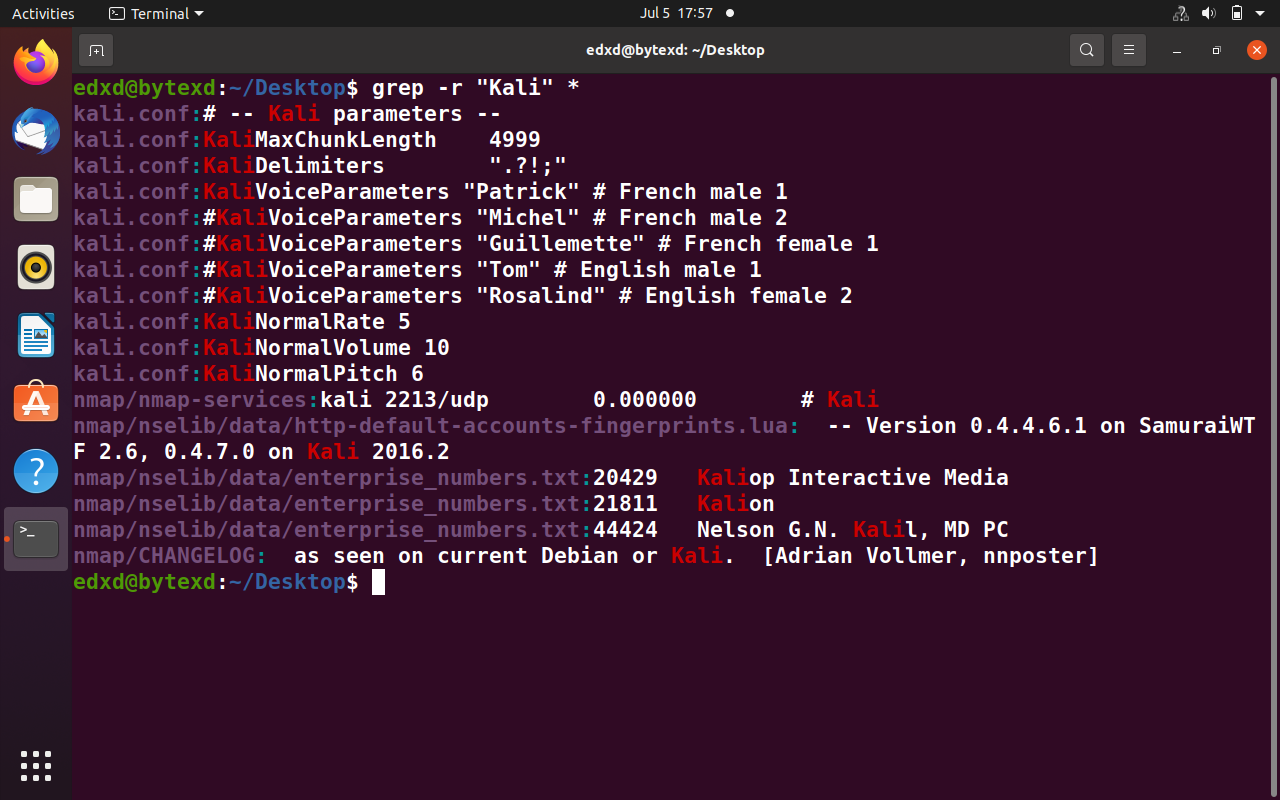

The -e parameter can be used multiple times in the same command each paired with a search-pattern, allows you to be more specific in searching for something in a file. Multiple pattern search with grep grep -e lorem -e amet ExampleFile.txt The command above will search in TextFile.txt, and return all lines that begins with " Example". The character ^ in front of a search-pattern suggests grep should only look words that starts with the search-pattern and nothing else. Search lines starting with a pattern grep ^Example TextFile.txt Filenames will be printed instead of the entire lioe. txt extension files that contain the word " dolor" will return true. List filenames that contain matched string grep -l dolor *txt The command above search for " ipsum" in randomtext.txt, and its output shows which line " ipsum" is at. When a search word is included, it returns the entire line (where word exists) with its line-count. Grep command can also be combined with other commands with the use of the pipe operator. The parameter -n returns content with line-count. We use grep command to search within files or output of text. Display matching line and list line number grep -n ipsum randomtext.txt When it finds a match, it prints the line with the. Any lines without " lorem" will return true. Grep is a Linux / Unix command-line tool used to search for a string of characters in a specified file. The command above searches for " lorem" in sometext.txt. The parameter -v excludes the entire line that matches the input pattern, and output the rest that doesn’t contain it. Inverse search with grep grep -v lorem sometext.txt In this topic, we are going to learn about GREP Command in Linux.

So the standard command is grep and then the string whichever you are looking for. The command above search for " smallness" and return the number of times it existed in TextFile.txt. Introduction to GREP command GREP means get regular expression and print but what is generally used for it is finding strings or sub strings within a file which is very handy for that in Linux. You can use what’s known as a recursive search to cover entire directories, subdirectories. With the -c parameter, grep will first find if a specific word exist, and then count how many times it’s being repeated. Grep can do much more than just search the contents of a specific file. The command above searches for the word " being" in ExampleFile.txt, and will return result if found.Īll the following will return true with existence of -i:Ĭount and output word repeatation with grep grep -c smallness TextFile.txt With the -i parameter, grep will search in a case-insensitive manner and will return true as long the input matches, regardles if it’s lowercase or uppercase characters. In the command above, grep search for " example" in Example.txt.Ĭase-insensitive search with grep grep -i being ExampleFile.txt With the -w parameter, grep gets more precise in its search and only return true if the exact word matches. The example command seach for the word " all" in name1.txt, name2.txt and name3.txt Finding an exact word with grep grep -w example Example.txt This command expands searching to multilple specified filenames. Search for something in multiple files grep all name1.txt name2.txt name3.txt Note: grep is by default case-sensitive, and without other parameters involved, grep would return results as long as it matches “exp”. The command above search for exp within FileName.txt, and return results when found. Grep is a powerful command that allows you to search for a specific set of characters, or words exist in a file, or multiple files. Search for something within a file grep exp FileName.txt The content input can be provided by either passing a file path or from a standard input (stdin). A utility to search content input that match with one or more RegEx patterns.


 0 kommentar(er)
0 kommentar(er)
